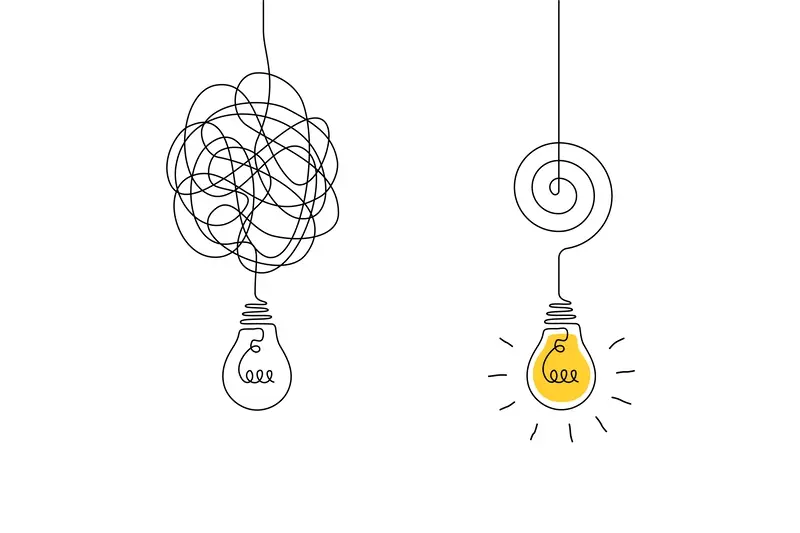How Do I Test My App Ideas Before Building Them?
You've got a brilliant app idea that keeps buzzing around your head. It feels like the next big thing—something that could genuinely change how people do things. But here's the problem: you don't know if anyone else will actually want it. Building an app costs thousands of pounds and takes months of work, so jumping straight into development feels a bit like gambling with your savings account.
I've seen this scenario play out countless times over my years in the mobile app industry. Entrepreneurs come to me with ideas they're absolutely certain will be hits, only to discover later that their target users couldn't care less about the problem they're trying to solve. It's honestly heartbreaking when someone spends six months and £20,000 building something nobody wants.
The good news? There are simple, affordable ways to test your app ideas before you commit serious time and money to building them. You don't need to be a tech expert or have a massive budget—you just need to know which testing methods work and how to use them properly.
The biggest risk isn't building the wrong features; its building something nobody actually needs in the first place
This guide will show you exactly how to validate your app concept using real users, simple prototypes, and market research techniques that won't break the bank. By the end, you'll know whether your idea has genuine potential or if you need to pivot before spending a penny on development. Let's dive into the practical steps that separate successful apps from expensive mistakes.
Why Testing Your App Idea Matters
Look, I get it. You've got this brilliant app idea buzzing around in your head and you're dying to start building it straight away. Trust me, I've been there—and I've watched countless clients make the same mistake of jumping headfirst into development without testing their concept first. It's a costly error that can save you thousands of pounds and months of heartache if you just take a step back.
The harsh reality is that most app ideas fail. Not because they're bad ideas, but because they solve problems that don't really exist or they target users who aren't willing to pay for the solution. I've seen perfectly functional apps with gorgeous designs that nobody downloads because the creators never bothered to validate whether people actually wanted what they were building.
Testing your app idea isn't just about avoiding failure—it's about understanding what success actually looks like for your specific concept. When you test early, you discover things like: Do people understand what your app does? Will they pay for it? What features do they actually care about? How do they currently solve this problem without your app?
The Real Cost of Not Testing
Here's what typically happens when you skip the testing phase. You spend months building features that users don't want, you launch to crickets, then you're back to square one trying to figure out what went wrong. The average app development project costs between £15,000-£50,000; wouldn't you rather spend a few hundred pounds upfront to make sure you're building something people actually want?
- Saves money on unnecessary features
- Reduces development time significantly
- Identifies real user problems early
- Helps refine your target market
- Prevents costly post-launch pivots
Testing doesn't guarantee success, but it definitely stacks the odds in your favour. The apps that make it are usually the ones that solved real problems for real people—and the only way to know if you're on the right track is to test your assumptions before you commit to building anything.
Understanding Your Target Users
Before you even think about creating prototypes or wireframes, you need to get inside the heads of the people who'll actually use your app. I mean, it sounds obvious when you say it like that, doesn't it? But you'd be surprised how many people skip this step—and then wonder why their brilliant idea falls flat on its face.
The thing is, most app builders think they know their users, but they're usually just guessing. They'll say things like "everyone will love this" or "young people use apps all the time." That's not understanding your users; that's making assumptions. And assumptions are dangerous in app development—they're expensive too.
Creating User Personas That Actually Help
Real user research starts with proper personas. Not the fluffy marketing ones with made-up names and stock photos, but detailed profiles based on actual conversations with real people. You need to know what frustrates them, what apps they already use, and how they currently solve the problem your app is trying to fix.
I always tell clients to speak to at least 10-15 potential users before moving forward. Ask them about their daily routines, their pain points, and what would genuinely make their life easier. You'll often find that what people say they want isn't what they actually need—and that gap is where successful apps live.
- Interview people who fit your target demographic face-to-face or via video calls
- Ask about their current solutions and frustrations
- Focus on behaviour patterns rather than feature requests
- Document their exact words—the language they use matters for later testing
Don't just ask people if they'd use your app—ask them to show you how they currently handle the problem you're trying to solve. Actions reveal more than words ever will.
Creating Simple Prototypes
Right, lets talk about prototypes. I know the word sounds a bit fancy, but honestly? A prototype is just a simple version of your app that shows how it works without all the bells and whistles. Think of it as a rough sketch before you paint the masterpiece.
The beauty of prototyping is that you don't need to know how to code—not even a little bit. I've seen clients create brilliant prototypes using nothing more than pen and paper. Seriously! Draw your app screens on paper, show someone how they'd tap through them, and you've got yourself a prototype. Its that simple.
But if you want to get a bit more sophisticated (and who doesn't?), there are some fantastic tools out there. Figma is my go-to recommendation for beginners. You can drag and drop elements to create screens that look and feel like a real app; you can even link them together so people can tap through your idea like its the real thing. The free version gives you everything you need to start.
What Should Your Prototype Include?
Keep it simple, really. Focus on the core function of your app—the main thing people will use it for. If you're building a food delivery app, show how someone finds a restaurant, picks their meal, and places an order. Don't worry about user accounts or payment systems yet... that stuff can wait.
I always tell my clients to prototype the "happy path" first. That's the perfect scenario where everything goes smoothly. Once you've nailed that, then you can think about what happens when things go wrong.
Your prototype should answer one key question: does this make sense? Can someone look at it and immediately understand what they're supposed to do? If the answer is yes, you're onto something good.
Testing Ideas Without Coding
You don't need to write a single line of code to test whether your app idea has legs. Actually, coding should be the last thing you do—not the first. I've seen too many clients burn through their budgets building something nobody wanted because they skipped this step.
The simplest way to test your concept is with a landing page. Create a basic website that explains what your app does and includes a sign-up form for early access. If people aren't willing to give you their email address for something free, they definitely won't pay for it later. You can build this in a few hours using tools like Carrd or even a simple WordPress site.
Paper Prototypes Work Wonders
Draw your app screens on paper or use sticky notes. Seriously. I know it sounds basic, but paper prototypes let you test user flows without spending weeks in design software. Sit with potential users and watch them try to complete tasks using your paper screens—you'll spot problems immediately.
For something more polished, tools like Figma or Adobe XD let you create clickable prototypes that feel almost real. Users can tap through screens and experience your app's flow without any actual development. The feedback you get at this stage is worth its weight in gold.
The best time to find out your idea won't work is before you've spent money building it
Another approach that works well is the "fake door" test. Add a button or feature announcement to an existing website or app and see how many people click it. High click-through rates suggest genuine interest; low rates mean you need to rethink your approach. It's a bit cheeky, but it gives you real behavioural data rather than what people say they might do.
Getting Real User Feedback
Right, so you've got your prototype ready and you think you understand your target users. Now comes the bit that makes most people nervous—actually talking to real humans about your app idea. I get it, it's scary putting your idea out there, but honestly? This is where the magic happens.
The key thing here is to talk to people who aren't your mates or family. They'll just tell you what they think you want to hear, won't they? You need to find genuine potential users—people who have the problem you're trying to solve. If you're building a fitness app, hang out at gyms. Building something for parents? Find parent groups online or at local playgrounds.
Best Ways to Collect Feedback
- One-on-one interviews (15-20 minutes each)
- Online surveys using tools like Typeform or Google Forms
- Social media polls and discussions
- Focus groups with 5-8 people
- Beta testing groups once you have a working version
When you're asking for feedback, don't lead people to the answers you want. Instead of saying "Would you use this app to track your workouts?" try "How do you currently keep track of your exercise?" See the difference? You want to understand their actual behaviour, not their theoretical intentions.
Questions That Actually Work
Here's what I've learned works: ask about their current frustrations first, then show them your solution. "What's the most annoying thing about booking restaurant tables?" is much better than "Do you like this restaurant booking app?" People love complaining—use that to your advantage!
And here's something important—pay attention to what people do, not just what they say. If someone says they'd definitely use your app but then forgets to download your prototype, that tells you everything you need to know about their actual interest level.
Analysing Market Demand
Right, so you've tested your concept with users and got some feedback—but here's where things get really interesting. Understanding if there's actual market demand for your app idea is probably the most overlooked step in the whole testing process. I mean, you can have the most beautifully designed prototype in the world, but if nobody's willing to pay for it or use it regularly, you've got a problem.
Market demand isn't just about whether people like your idea when you show it to them. It's about whether they'll actively seek it out, download it, and keep using it when they've got hundreds of other apps competing for their attention. The good news? There are some straightforward ways to figure this out before you spend a fortune on development.
Looking at Your Competition
Start by researching apps that are similar to yours—and I don't mean identical, just solving similar problems. Check their download numbers, read their reviews, and see how often they're updated. If you find successful apps in your space, that's actually good news; it means there's proven demand. If you can't find any competitors at all, that might be a red flag rather than an opportunity.
Use tools like App Annie or Sensor Tower to get rough download estimates for competitor apps. Even the free versions give you enough data to spot trends.
Testing Real Interest
One trick I've used for years is creating a simple landing page that describes your app and includes a "Get notified when we launch" button. Drive some targeted traffic to it through social media or small paid ads, then see how many people actually sign up. If you're struggling to get even 100 email addresses after showing your idea to 1000 people, you might need to rethink your approach.
- Research competitor download numbers and user reviews
- Create a landing page to capture interested users
- Run small paid ad campaigns to test interest
- Survey potential users about their willingness to pay
- Check search volume for keywords related to your app's purpose
The key is being honest about what the data tells you. Sometimes the market just isn't ready for your idea yet, and that's okay—better to find out now than after you've built the whole thing.
Common Testing Mistakes to Avoid
After years of watching brilliant app ideas crash and burn during testing (and helping clients recover from their mistakes), I've seen the same errors crop up again and again. The good news? These mistakes are completely avoidable once you know what to look for.
The biggest mistake I see is testing with the wrong people. I can't tell you how many times a client has shown their app to their mates, family members, or colleagues and called it "user testing." Your mum will probably tell you its brilliant regardless of whether it actually solves a real problem. Your best mate might not even be in your target market. You need to test with people who genuinely represent your potential users—not just people who are convenient to reach.
The Most Damaging Testing Errors
- Only testing with people you know personally
- Asking leading questions like "Don't you think this feature is useful?"
- Testing too late in the development process when changes become expensive
- Ignoring negative feedback or making excuses for poor user reactions
- Testing just once instead of multiple rounds with different user groups
- Focusing on what people say rather than what they actually do
- Not testing your core assumption—that the problem you're solving actually matters to people
Another classic error? Falling in love with your first idea and refusing to pivot when testing shows it won't work. I've seen founders spend months trying to prove their original concept is right instead of listening to what users are actually telling them. The whole point of testing is to fail fast and cheap—not to validate what you've already decided is true.
Remember, every piece of feedback is data, not a personal attack on your vision. The apps that succeed are the ones that adapt based on real user insights, not the ones that stick rigidly to their original plan.
Testing your app ideas before you build them isn't just smart business—it's the difference between launching something people actually want and burning through your budget on something nobody needs. I've seen too many brilliant concepts fail because the founders skipped this step, convinced their idea was so good it didn't need validation. Trust me, every idea needs testing.
The process doesn't have to be complicated or expensive. Start with understanding who you're building for, create simple prototypes that show your concept, and get real feedback from actual potential users. You can validate most ideas with landing pages, mockups, and conversations before writing a single line of code. The key is being honest about what you learn—even when it's not what you want to hear.
Market demand analysis and competitor research will save you months of wasted development time. But here's what I've learned after years of doing this: testing never really stops. Even after you launch, you'll be constantly learning about your users and refining your approach. The apps that succeed are the ones that stay curious about their audience.
Remember, failing fast and cheap during the idea testing phase means you can pivot, improve, or move on to better concepts without the heartache of a failed launch. The goal isn't to prove your idea is perfect—it's to make it as good as possible before you invest serious time and money into development. Your future self will thank you for doing the work upfront, and your users will get a much better app because of it.
Share this
Subscribe To Our Learning Centre
You May Also Like
These Related Guides

How Do I Validate My App Idea Before Spending Money?

What Tools Should I Use for Mobile App Market Research?



